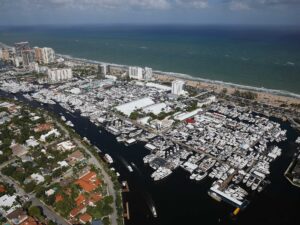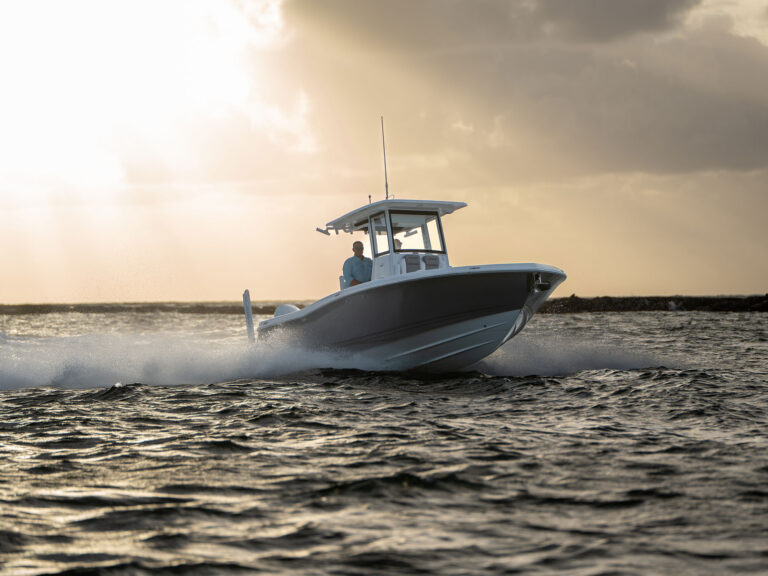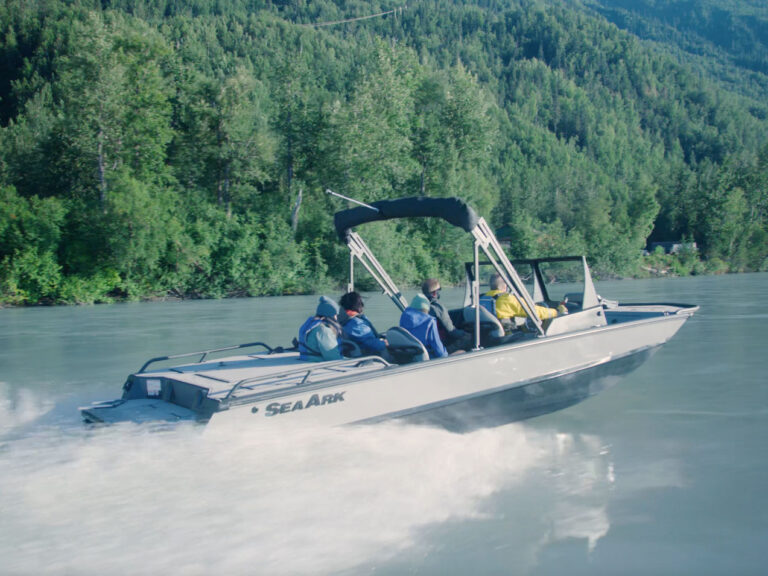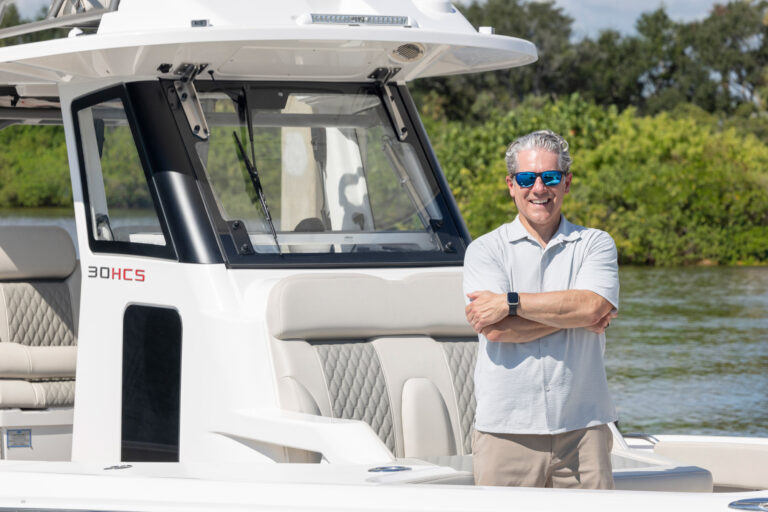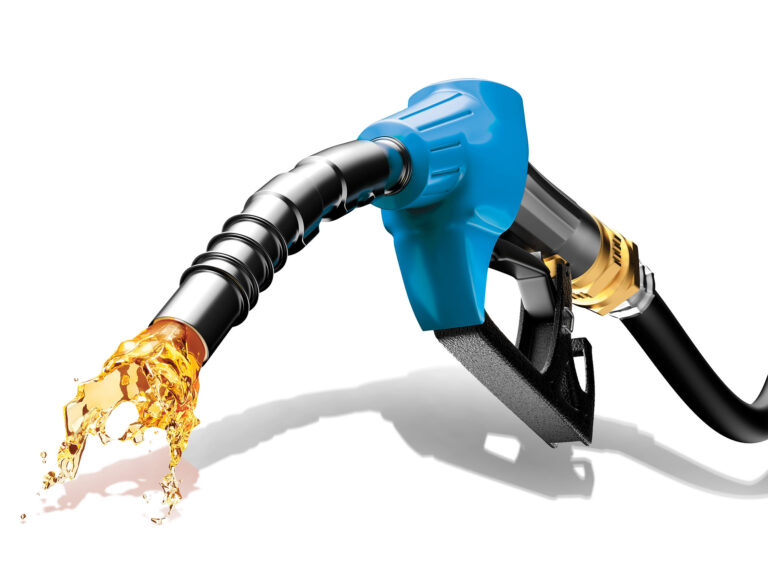The letters always start like this. “Dear Boating Magazine, your boat test said the Acme Superbad 26 broke 50 mph. I can’t get it past 46. What gives?” My answer goes something like, “Well, did you look at the details of the review?”
We typically run our tests with two persons aboard and fuel loads ranging from a quarter tank to full, with no water in the tanks and no gear. In reality, you typically run your boat with a crew of people, a full fuel tank, loaded cooler — a couple of 50-pound bags of ice — and an assortment of gear that accumulates in stowage like old magazines in an attic.
While other forces such as wind and current factor in, weight matters — not only how much weight is brought aboard, but also where it is located. Knowing how to deal with weight can help your efficiency and seakeeping.
Weight distribution starts with the center of gravity and trim. The boat’s center of gravity (CG) is the point where downward (gravitational) forces focus. The center of buoyancy (CB) is where the upward (floating) forces focus and should always line up vertically under the CG at rest.
Where’s the CG? “On almost any planing hull you can just assume that the center of gravity and buoyancy is 60 to 65 percent aft of the bow,” explained Dave Gerr, noted naval architect and dean of the Westlawn Institute of Marine Technology. Putting the CG on the aft third helps a boat quickly plane but makes it more sensitive to trim and weight issues. When the weight distribution is focused around the intended CG, it will find its best speed, fuel economy and handling. But that’s not often practical. Sometimes adding weight in the wrong place will alter a boat’s CG or CB away from the ideal spot.
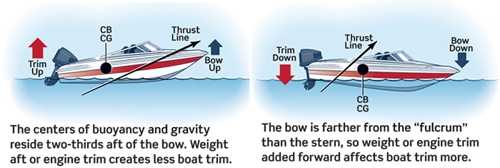
Your first line of defense is how you trim the engine. Trimming up redirects the thrust from the propeller and raises the bow, helping a boat locate its sweet spot. Gerr offered a simple visual. Draw a profile of a boat and put a dot where the CG would be. Trimmed up, the line of thrust runs under and forward of the CG and lifts the bow. Trimmed down, it runs above and behind the CG, lowering it.
You can also compensate for load with trim tabs, correcting list caused by weight load by raising or lowering the boat on one side.
Some tips: If you load the stern with heavy scuba gear, stow some equipment in the bow to counteract it. Don’t let all the fat guys sit to port; try to place them on opposing cushions. And if you add aftermarket items, think how they’ll alter weight distribution.


